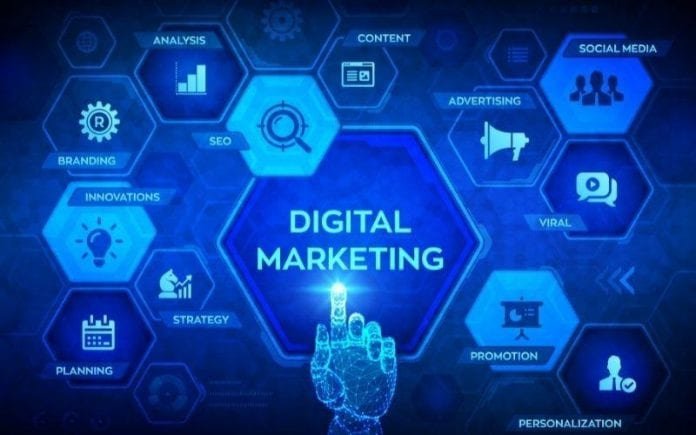Last Updated on March 17, 2024 by Umer Malik
Most businesses got an online platform that imperative enough to understand that Digital Marketing plan is important for successful implementation. Most of the part of the marketing strategy is digital. Business and consumers are almost online and it’s important to reach them. Proper observation is required to understand the preferences of customers. You can easily master how to craft an effective strategy. I suggest you have great SEO services from Home Service Direct and it has quality services including site auditing, on-page SEO activities, Off-page services.
When you’re growing a business, the ever-changing digital landscape can become a mind-blogging one. There are different responsibilities to handle and tasks to perform, so crafting an effective strategy is challenging.
Table of Contents
Understanding Digital Marketing Plan and Campaign.
Digital Marketing Campaign refers to the building blocks and actions that are working within your digital marketing strategy and helps you move towards your specific goal and target.
Meaning of Digital Marketing plan.
This plan refers to short, medium- and long-term business goals. It refers to the strategies that help you achieve those goals at the digital level. The plan also refers to the channels that we are using. Plans include the development of an existing plan with the change in the external or internal environment. Plan refers to the matter of investment and budget.
The steps provided below will help you understand how to make an effective digital marketing strategy.
Step 1: Objectify measurable business goals
The initial step in the creation of a digital marketing strategy is to understand your business goals. The goals have to be specific, measurable, attainable, realistic and can be achievable in time. Some of the goals that you can keep are to boost brand awareness by increasing YouTube subscribers, Facebook Ad reach. Moreover, you can keep the goal of increase organic traffic, and this can be done by getting higher ranks for keywords, posting good quality content with targeted keywords. You can come up with measurable goals by specifying the goals of the business first and then translating them into digital marketing goals.
Step 2: Understand the target audience
In this step understand the segment of the audience you want to target. Why not perform this step first? The reason being, you need to finalize who you are then only you can provide your services. In order to identify the audience, the following things can be included:
- Age group
- Gender
- Educational background
- Interests
- Occupation
- Family status
- Relationship status
One of the best ways to identify your buyer persona is to carefully analyze the data you already have. Create and analyze the Google Analytics report deeply, Google ads report and create customer profiles accordingly, and understand whom to target and when.
Step 3: Figure out user needs and search the intent
What is search intent? In the digital era, consumer or user express their needs through search queries. When a person types a search query in Google, it has a specific motive or intent. If the content/products or services provided by you do not satisfy it, you can count it as a failed strategy. It’s important to do keyword research. Moreover, you can learn how to do keyword research through Digital Marketing Classes in Pune.
After understanding the target customer, you can use different techniques to understand their needs and how they express them using search engines. You can either use the digital sales funnel technique or creation of different sales funnel for different customers.
Step 4: Creation of content marketing library
You know your target market and customers by now very well. Start building up your digital assets now. Digital assets mean blogs, logos, cover images, podcasts, videos, images, anything that highlights who you are and what are you offering. Content marketing is an essential pillar of digital marketing. It is important because through the content you convey what your business is and what you are offering to society.
Step 5: Do not delay SEO
SEO takes time to work and this is the reason you should start working on it soon. SEO generally takes 5-6 months to generate results. Because of these marketers tend to focus more on other techniques. While focusing on other techniques, SEO should not be ignored. So, it is recommended to keep some of your marketing budget for SEO-related tasks.
Step 6: Scrutinize paid advertising channels
After a certain period, you need to finalize which platform generates a good number of leads. The best way to find out on which platform to place digital marketing is by running pilot campaigns. You should not allocate your whole budget to one channel. The most popular advertising platforms can be Facebook Ads, Instagram Ads, Google Ads, LinkedIn Ads.
Step 7: Operate on email marketing segment and automation
Micro conversions sound small but create a huge impact. The end goal of digital marketing is to generate more revenue. In order to get to that goal, the first focus should be made on micro-conversion. You can further use segmentation and automation. You can use email segmentation to segment the list into groups of people that share the same interest. With email marketing, automation comes into play because email marketing involves a lot of work. With automation, you can define the whole process beforehand. Your job will be to set the automatic blocks, monitor the performance, and take actions where required.
Step 8: Utilize new traffic sources
While creating the content you can use the channels like Google Discover Ads, Google Shopping search, Optimizing your content for voice search. The channels mentioned are new and less competitive. You can do the test run on them by using pilot campaigns in order to understand the results.
Step 9: Retargeting and personalization
Above mentioned steps help you find the customer but in this step, the focus should be on the user who is interested but had not converted into sales yet. Proper ads should place in order to place the presence. Marketing rule 7 states that prospects are more likely to convert if they see, hear an ad at least 7 times. The ads shouldn’t be shown to everyone but personalize based on the people’s actions.
Step 10: Work on conversion escalation and redesign
Conversion optimization refers to the performance of optimization on your website so that visitors can perform the desired actions. This initiates with website design, landing page optimization, and other elements that contribute to conversions. Lastly, you should not stick to one plan, flexibility and redesign is important because the external environment is variable.
Conclusion
By the use of digital marketing plan understand in detail how to use various digital marketing channels to grow your business. In order to create an effective strategy, start with defining your goals. With good research understand the needs of people in order to create a target. After successful collection of information, you are ready to translate it into content creation. The right type of content will satisfy the user’s needs and help to increase the traffic to your webpage. Do not wait long to start SEO. You can learn how to manage SEO from Digital Marketing Training In Pune.
Implementing good SEO and generating traffic is not enough. Successful conversion of those traffic to customers is the goal. Finally, regular analyzing of the current strategy and redesigning it is a must.
Apart from that, if you are interested to know about Top 5 Digital Marketing Tips For Beginners then visit our Digital Marketing category.























